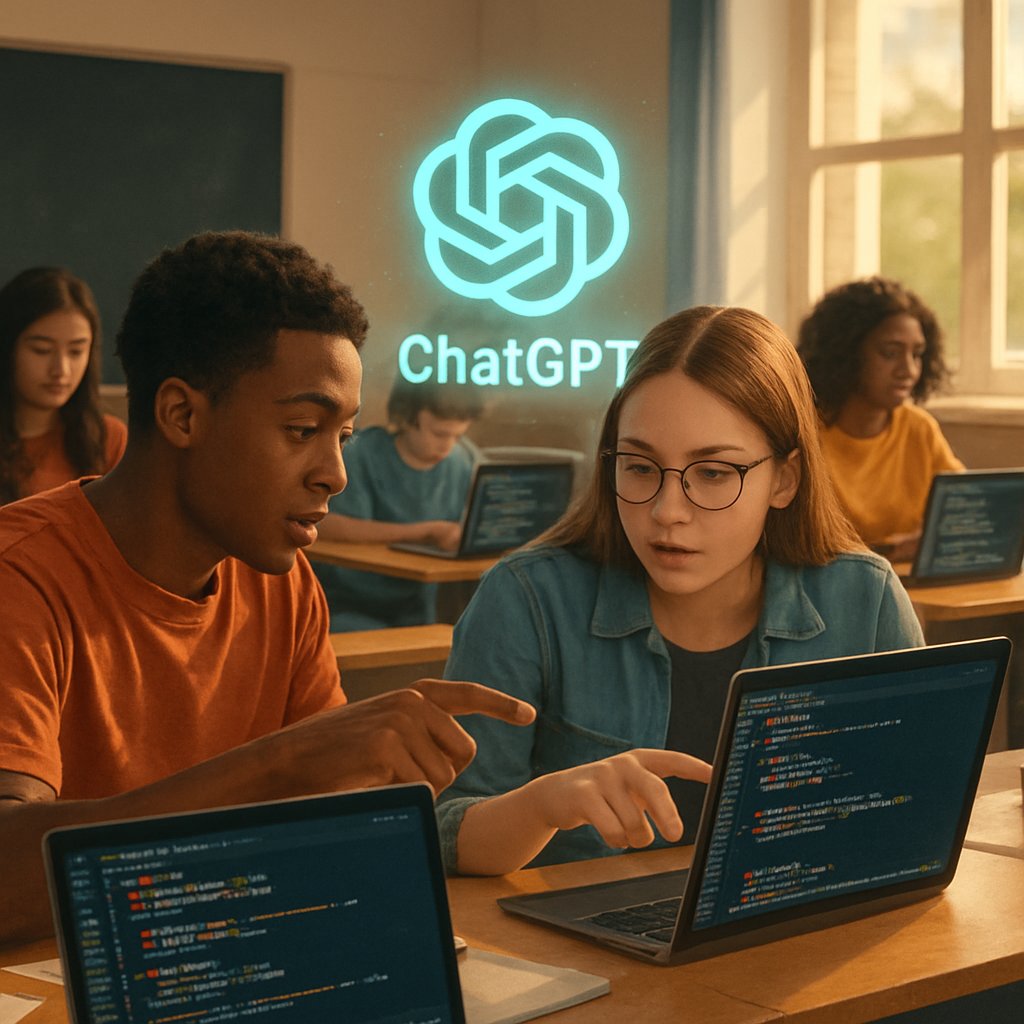Navigating the Code: How ChatGPT Shapes Learning in Programming Classes
Introduction
In the fast-evolving landscape of education, technology is playing an increasingly pivotal role. From personalized learning systems to AI-driven tutors, innovations are reshaping how students grasp challenging subjects. One standout player is ChatGPT, a large language model that can assist students in real-time by generating, debugging, and explaining code. But while this smart tool has exploded in popularity within computer science classrooms, a nagging question lingers: Does it truly enhance learning, or could it tether students to an ongoing dependency?
A recent study titled “ChatGPT in Introductory Programming” dives into this very conundrum, examining the balance of productivity and conceptual understanding among beginner programming students. Let’s unpack what this research reveals and its implications for the classroom.
ChatGPT in the Classroom: What’s the Deal?
As educational institutions embrace AI technologies, notable advancements like ChatGPT stand out for their potential to provide immediate support in programming classes. Whether helping to untangle complicated code problems or clarifying fundamental concepts, ChatGPT has become a handy companion for many students—especially those grappling with tricky programming languages, like C.
But as with every shimmering new tool, educators and students alike wonder whether the advantages come without cost. Could relying on tools like ChatGPT come at the expense of deeper understanding? The study addresses this important question by examining students' use of ChatGPT during programming assignments, with a focus on performance, code quality, efficiency, and overall perceptions.
The Research Approach: A Balanced Exploration
Who Participated?
The researchers pulled data from an introductory programming course at a university. A mix of 27 students—six female and 21 male—participated voluntarily. They tackled two lab assignments honing in on specific programming tasks: one centered on functions and another on structures.
What Was Done?
To get a clear picture, researchers employed a counterbalanced, quasi-experimental design—essentially meaning that half the class would use ChatGPT for one assignment and the other half would not, then switch it for the second assignment. This method helps mitigate biases that might skew results if one group were preferred to another.
How Were Results Measured?
Students' submitted code was evaluated using a detailed rubric that assessed several aspects of code quality, including:
- Correctness: Did the code work as intended?
- Efficiency: Was the code optimized?
- Readability: Was it easy to read and understand?
- Error handling: Did the student handle potential mistakes properly?
The data collection also included pre- and post-surveys to examine confidence levels, familiarity with ChatGPT, and conceptual understanding.
Key Findings: Productivity vs. Conceptual Learning
Performance and Efficiency—Better, but at What Cost?
The results were illuminating. Students who utilized ChatGPT consistently scored higher on various metrics of code quality, especially in correctness and readability. They also completed their assignments much faster, highlighting the efficiency benefits of having a coding assistant.
However, when digging deeper into the conceptual learning aspect—the real crux of programming education—the findings were more mixed. For the function assignment, there wasn’t a significant boost in understanding, although students had a notable edge on specific conceptual questions. Conversely, in the structures assignment, those who used ChatGPT performed better overall on assessments related to their understanding of the material.
What does this tell us? While ChatGPT can amplify productivity and code quality, its role in fostering deeper conceptual mastery might vary, depending on the task type.
Student Experiences: Mixed Reviews but Mostly Positive
Student perspectives on using ChatGPT leaned positive. Many appreciated its help in generating code and providing explanations, viewing it as a valuable part of their learning journey. However, there were underlying concerns about over-reliance. Students expressed worry that leaning too heavily on ChatGPT might dampen their own problem-solving skills or lead to a lack of independent thinking.
Practical Implications: Striking a Balance
So, what does this mean for educators and students alike? As classrooms increasingly welcome AI tools like ChatGPT, intentional integration becomes paramount. Here are some practical steps to ensure effective use:
1. Foster Structured Use:
Provide students with frameworks and prompts for using ChatGPT that encourage exploration and independence instead of simply asking for code solutions.
2. Focus on Conceptual Learning:
Incorporate additional reflective exercises and assessments that focus more on understanding fundamental programming principles rather than just code correctness.
3. Encourage Critical Thinking:
Combine AI tools with strategies that promote critical thinking, such as peer coding reviews or discussions about the AI’s suggestions.
4. Monitor Dependency:
Assess students' reliance on ChatGPT over time and adapt teaching methods if it seems to hinder their grasp on essential concepts.
5. Create a Community:
Engage students in discussions about ethical AI use, promoting awareness about the potential pitfalls of over-reliance.
Key Takeaways
Improved Code Quality: Students using ChatGPT scored better on code quality metrics, particularly in areas like correctness and readability.
Increased Efficiency: Access to ChatGPT allowed students to complete tasks more quickly, enhancing productivity without sacrificing immediate output quality.
Mixed Conceptual Understanding: While some improvements were noted in understanding specific programming tasks, the overall effect on deeper learning was inconsistent across different assignments.
Positive Student Reception: Most students appreciated ChatGPT's assistance, though concerns about dependency emerged as a significant theme.
Structured Integration is Key: For the effective use of AI tools like ChatGPT in programming education, structured and intentional integration is crucial to balance productivity with conceptual mastery.
In wrapping up, it’s clear that generative AI like ChatGPT has a role to play in modern education. By leveraging its capabilities while remaining mindful of its limitations, educators can help students navigate the world of programming in a thoughtful and enriching way!

